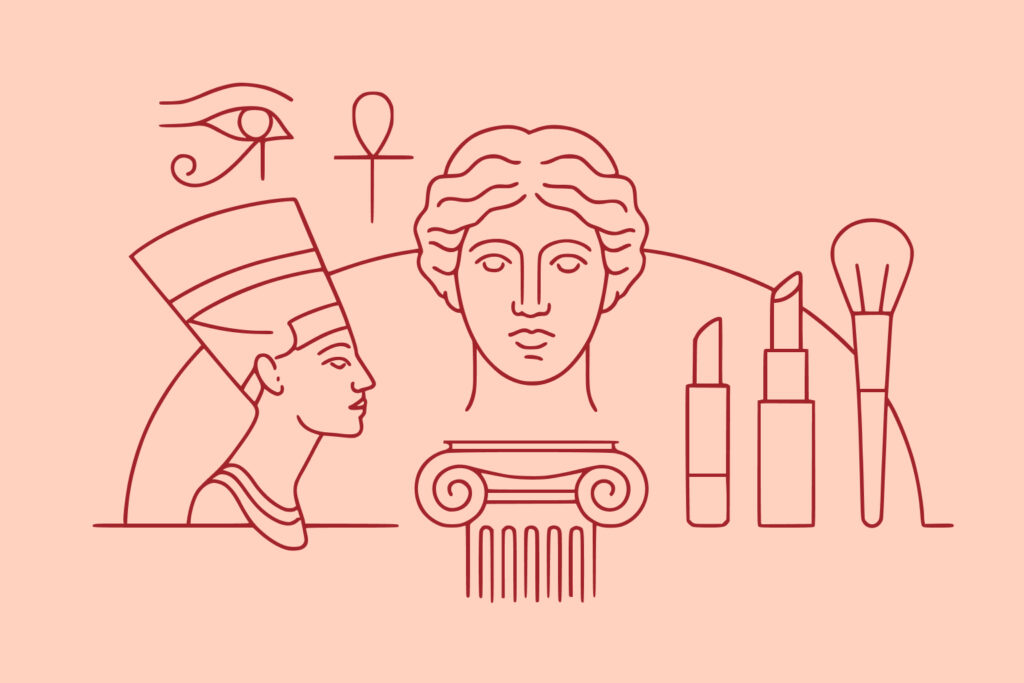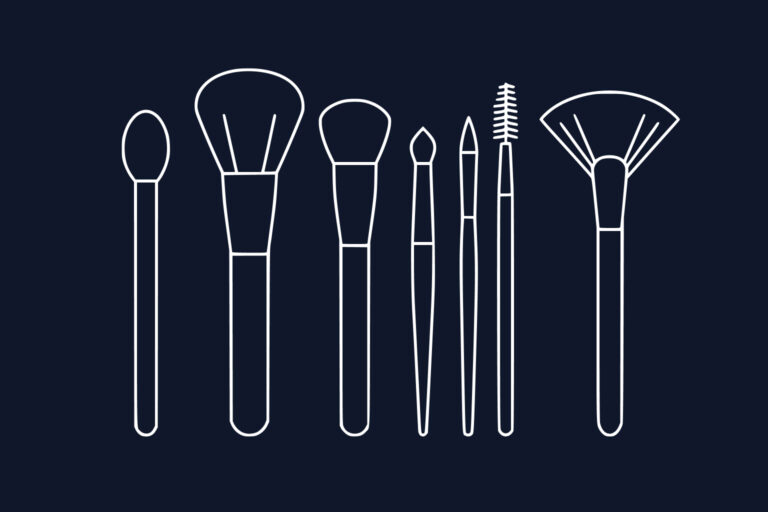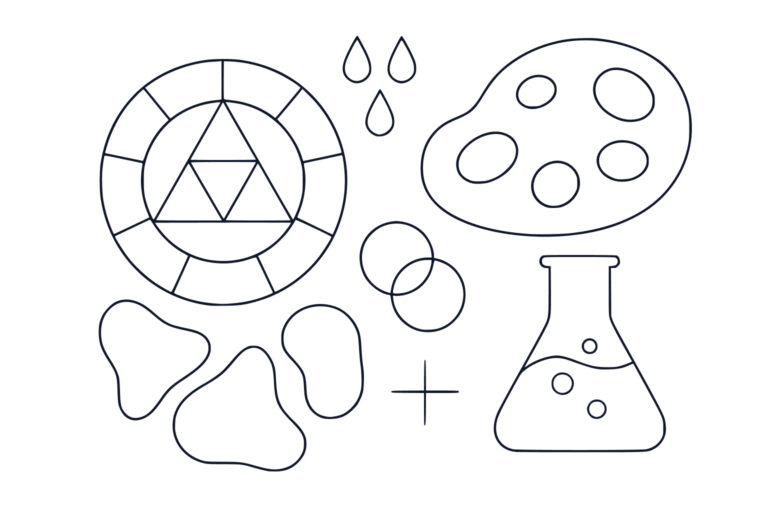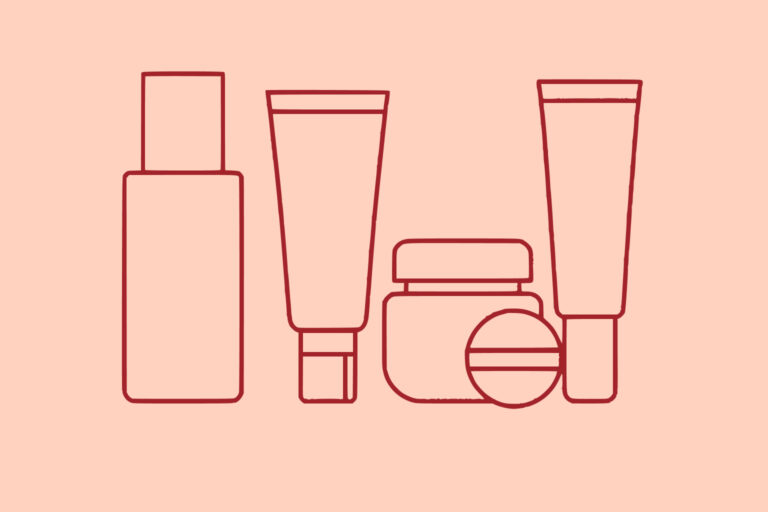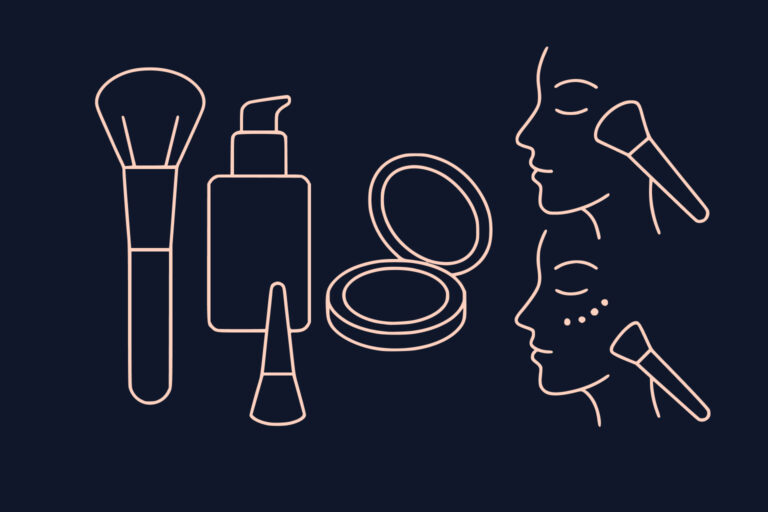The Complete History of Makeup: From Ancient Egypt to Modern Beauty
Published by Professional Makeup Artist London
Makeup has been an integral part of human culture for thousands of years, serving purposes far beyond mere vanity. From ancient rituals to modern self-expression, the history of cosmetics tells a fascinating story of innovation, artistry, and cultural evolution. As a professional makeup artist, understanding this rich heritage helps us appreciate the artistry and significance behind every brushstroke.
Ancient Civilisations: The Birth of Beauty
Ancient Egypt stands as the birthplace of modern cosmetics, where both men and women adorned themselves with elaborate makeup believing it provided protection from evil spirits and honoured their gods. The iconic kohl-rimmed eyes weren’t just for beauty—they served practical purposes too, protecting against the harsh desert sun and reducing glare.
The Egyptians developed sophisticated formulations using galena (lead sulphide ), antimony, and soot to create their famous kohl, which was applied with ivory, wood, or metal sticks. They created stunning eye colours using green malachite and blue lapis lazuli, whilst red ochre mixed with fat or resin formed the first lipsticks. Even nail polish had its origins in ancient Egypt, where henna was used to stain nails, with different colours indicating social status.
These ancient innovators developed sophisticated application techniques and storage methods, creating the first makeup palettes, mirrors, and cosmetic containers. Many of these innovations continue to influence modern makeup products and tools we use today.
Greek beauty standards emphasised natural appearance, though they weren’t without their cosmetic practices. Women used white lead powder mixed with chalk to achieve pale complexions, believing it represented purity and high social status. They created rosy cheeks using crushed berries and red clay, defined their brows with dark powders to achieve the coveted unibrow, and enhanced their lips with beeswax and plant dyes for subtle colour.
Roman women took cosmetics to new heights of luxury and complexity, developing more sophisticated formulations and application techniques, though many contained dangerous ingredients like lead and mercury. They created complex foundations using lead-based formulas for extreme pallor, developed the first hair dyes using plant extracts and minerals, and introduced perfumed cosmetics. The Romans even established the first professional makeup application services with specialised cosmetic slaves.
Medieval and Renaissance Periods: Beauty Through the Ages
The medieval period saw a decline in cosmetic use due to religious influences, as the Christian church associated makeup with vanity and sin. This led to more subtle beauty practices, with pale skin achieved through bloodletting and avoiding sun exposure, high foreheads created by plucking hair, and minimal colour when used at all. The emphasis was on natural, God-given beauty.
The Renaissance marked a dramatic return to elaborate makeup and beauty practices. Influenced by art and cultural rebirth, cosmetics became symbols of wealth and sophistication. Venetian ceruse, a lead-based white foundation, was used to achieve porcelain skin, whilst vermillion lips were created using mercury-based pigments. Elaborate hairstyles with added pieces and decorations became popular, along with beauty patches—small fabric shapes applied to the face.
Understanding these historical colour theory principles helps modern makeup artists appreciate how colour choices have always been deeply cultural and symbolic.
The Victorian Era: Modesty and Innovation
The Victorian era brought conflicting attitudes towards makeup. Whilst public opinion favoured natural beauty, private cosmetic use flourished amongst the upper classes. This period saw the birth of commercial cosmetics with the first mass-produced makeup products, safer formulations that gradually moved away from toxic ingredients, and the first makeup instruction books and guides. Department stores began selling cosmetics, making them commercially available to a broader audience.
Popular Victorian products included rice powder as a safer alternative to lead-based foundations, lip salves providing tinted balms for subtle colour, early versions of modern eyebrow pencils, and cold cream for moisturising and cleansing. These innovations laid the groundwork for the modern cosmetics industry.
The 20th Century: Modern Makeup Revolution
The early 20th century revolutionised the cosmetics industry with safer ingredients, mass production, and innovative packaging. Max Factor pioneered greasepaint for film and stage, Maybelline introduced the first modern mascara in 1917, Revlon revolutionised nail polish with new colours and formulations, and Elizabeth Arden established the first modern beauty salon.
The 1920s brought dramatic changes in beauty standards, with women embracing bold, theatrical makeup looks. Dark kohl eyes with heavy black eyeliner and dark shadows became popular, along with cupid’s bow lips in small, defined shapes using deep reds. Pale powder created matte, porcelain complexions, whilst thin eyebrows were achieved through over-plucking.
The mid-century period from the 1930s to 1950s established many techniques still used in modern basic makeup application. The 1930s featured sophisticated glamour with defined features, the 1940s brought practical beauty due to wartime rationing, and the 1950s emphasised feminine perfection with red lips and winged eyeliner.
The 1960s brought youth culture to the forefront, revolutionising makeup with bold, graphic looks. False eyelashes became mainstream, graphic eyeliner created bold geometric eye designs, pale lips in nude and white colours were popular, and mod makeup featured clean, geometric application techniques.
Modern Era: Technology and Diversity
The 1970s and 1980s saw extreme contrasts in makeup styles, from natural hippie looks with earthy tones and minimal makeup in the 1970s to bold colours, heavy contouring, and dramatic application in the 1980s.
The turn of the millennium brought both minimalist trends and experimental colour play. The 1990s featured grunge makeup with dark, smudged looks and glossy lips with high-shine products. The 2000s introduced bronzed skin for sun-kissed, healthy-looking complexions and coloured mascara in blue, purple, and green.
Social media and digital technology have transformed modern makeup culture since 2010, creating new trends and techniques. HD makeup with high-definition formulations for digital media became essential, whilst Instagram-inspired contouring techniques revolutionised sculpting methods. The beauty industry has embraced inclusive beauty with expanded shade ranges for all skin tones and clean beauty focusing on safe, sustainable ingredients.
The evolution of professional makeup brushes and tools has paralleled these cultural changes, with modern implements offering precision and versatility our ancestors could never imagine.
Cultural Significance and Modern Applications
Throughout history, makeup has served as a powerful form of self-expression and cultural identity. Today’s makeup artists draw inspiration from this rich heritage whilst creating contemporary looks. Ancient Egyptian bold, graphic eyeliner remains timelessly elegant, Renaissance contouring techniques echo historical face-shaping methods, Victorian natural, glowing skin continues to be desirable, and 1920s dramatic eyes and defined lips work perfectly for special occasions.
Modern makeup artists benefit from understanding this historical context, as it informs our approach to colour selection and application techniques. Historical influence appears in modern practice through technique evolution, where ancient application methods have been refined with modern tools. Colour psychology draws from historical colour meanings to inform contemporary choices, cultural sensitivity helps us understand makeup’s significance across different traditions, and innovation inspiration comes from historical formulations that inspire modern product development.
The Future of Makeup
As we look towards the future, makeup continues to evolve with technology, sustainability concerns, and changing beauty standards. Virtual reality, AI colour matching, and sustainable packaging represent the next chapter in this ongoing story. Emerging trends include sustainable beauty with eco-friendly formulations and packaging, personalised cosmetics with custom-blended products for individual needs, technology integration through AR try-on experiences and smart beauty tools, and inclusive innovation with continued expansion of shade ranges and accessibility.
Conclusion
The history of makeup reveals humanity’s enduring desire for beauty, self-expression, and cultural identity. From ancient Egyptian kohl to modern high-definition foundations, each era has contributed to the rich tapestry of cosmetic artistry we enjoy today.
As a professional makeup artist in London, I draw daily inspiration from this incredible heritage. Whether creating a natural everyday look or an elaborate special occasion design, understanding makeup’s history enriches every application and helps clients appreciate the artistry behind their transformation.
The next time you apply makeup, remember that you’re participating in a tradition spanning millennia—one that connects you to countless generations of people who understood the transformative power of cosmetics.
